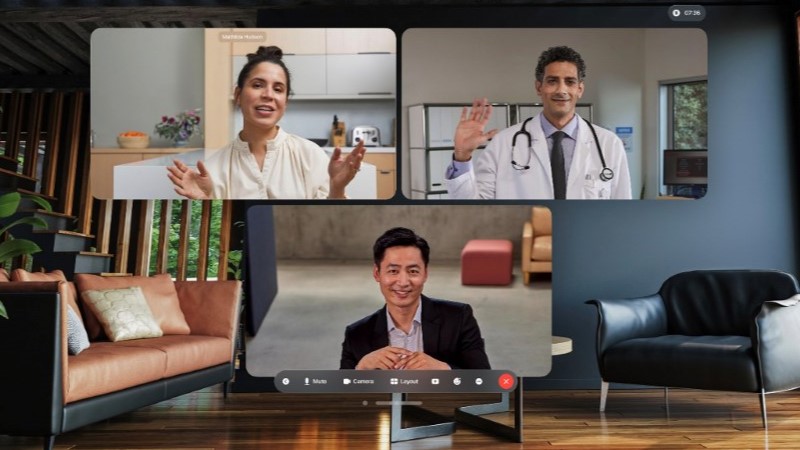The days when businesses viewed sustainability as an inconvenience are over. Today, it can be a gateway to greater efficiency and brand reputation, not to mention a healthier planet.
IT is helping to make it happen, by supporting everything from hybrid work and energy-efficient infrastructure to smart-building technologies and the overall sustainability strategies for their organizations.
This was underscored by a new study: Sustainability Readiness Among European Organizations in 2023. Based on a survey of 859 businesses across Europe, the Middle East, and Africa, the study found that IT’s role in sustainability is expanding in important ways — and that, overall, the focus on sustainability in business is front and center.
To gain a better understanding of the study, as well as Cisco’s solutions for hybrid work and smart workspaces, we chatted with Luca Ferraro, Cisco’s global sustainability sales lead for Webex.
Thank you, Luca! What did the IDC report reveal in terms of overall attitudes towards sustainability and its importance for business?
Thanks, Kevin. The report shows that there are more and more companies gearing up to implement sustainability strategies to achieve net zero targets. There are more sustainability departments with chief sustainability officers heading them being set up, and especially in bigger companies, we are beginning to see sustainability leads being created within IT.
IT, of course, is integral to sustainability efforts.
Yes, IT has obviously been important for increasing the efficiency of any organization’s own infrastructure. The IDC report shows that more and more companies see the value of IT as helping to increase the operational efficiency of other business areas within the company. And Cisco has a big part to play in many of these solutions. Whether that is in smart buildings, hybrid work, manufacturing, or other areas. There’s a role for IT to play in many different areas of an organization, not just as an infrastructure play. And that’s being recognized.
The IDC report shows that a top priority for companies is to track energy consumption to be able to manage this more efficiently and hence save on energy costs. Cisco offers data insights on energy consumption across different platforms; for example, carbon emission insights were added earlier this year to allow companies to track energy consumption across their network of Cisco devices as well as providing conversion to CO2e emissions. This allows our customers to report how IT contributes to their overall carbon footprint.
Are budgets reflecting that?
Yes, budgets are being restructured for IT to spend on sustainability solutions and to support other areas of the business. As shown in the study, about 60 percent of companies surveyed are prepared to pay a premium for sustainable products and services, and there’s a definite trend from seeing sustainability as a risk-management area to a business-transformation area.
So, in effect, it’s gone from a kind of inconvenience to a business imperative.
Yes, IT is seen more and more as a potentially reputation-enhancing, profit-generating area. Not just as a risk and compliance play, but more as a business opportunity, and as helping a company grow, innovate, and differentiate versus the competition.
What are some key areas in which IT and businesses are focusing?
In the IDC study, energy consumption is a big priority. For example, companies are trying to get more data insights around their energy consumption. And they are trying to save energy and be more efficient. IT teams and specific IT tools can help, whether that is in smart buildings, hybrid work, manufacturing, or other areas. There's an important role for IT to play, not just in infrastructure.
What are some of the hurdles they are facing?
The technology is there, but there's often a need to consolidate some of the tools and the insights, to gain more of a cross-architecture view of different technologies. Also, from an organizational point of view, there’s a need to coordinate within an organization between different departments — for example, IT with real estate, HR, or the more focused sustainability teams that are being created. And there are more sophisticated reporting requirements from governments, so legal and compliance teams need to be coordinated.
What are some specific solutions and expertise that Cisco can offer in these sustainability journeys?
We offer support in many different dimensions. Of course, we have the services side of things. We help companies find and plug the gaps in their IT infrastructure, such as areas where they could be saving energy. We can also help with setting up a smart and sustainable building.
That's from a service point of view.
I’m speaking from New York’s Penn One office, which is a showcase for sustainable technology. What are some highlights you’d like to call out?
One of the key technologies used in Penn One is Power Over Ethernet. Penn1 features 100 percent PoE architecture. From automated blinds, smart-powered desks, lighting, and so on, there are over 5,000 data points being collected every second to assure a healthy, secure, and effective working environment.
How specifically does Power Over Ethernet save energy?
PoE is lower-voltage DC power, as are all of those devices. So, you eliminate the loss of energy from converting between AC and DC, which is comparatively inefficient. At the same time, you eliminate a lot of heavy, high-voltage cables — so less steel and copper, and the embodied carbon from their manufacture, transport, and end-of-life disposal.
Let’s talk about the Internet of Things. Capturing data from the environment is a big part of Cisco’s solution, isn’t it?
Yes, as mentioned, in Cisco’s New York office we collect more than 5,000 data points per second; in the Atlanta office, it’s 8,000. With all that real-time information, you can finetune energy usage and the office experience by monitoring noise levels, air quality, temperature, light, room usage, and so much more.
All these elements make for an optimal working environment where people want to come to work. Cisco’s CEO Chuck Robbins likes to say that we make the office a magnet, not a mandate. And a critical element of that is to not only support a healthy environment, but also create a place where people want to collaborate. And ensure that people in the office or from faraway places all have an equal experience and voice — and do it securely.
You mentioned New York and Atlanta. And this month, Cisco’s new office in Paris is opening. Anything unique about the Paris space?
For one thing, the Paris office is in a historic building. So, we could not touch some of the walls or the fittings. That was a different challenge. But we were able to adapt and create a very flexible environment. It shows how we can adapt a historic building with the latest technology. And create a magnet for employees who want a healthy environment and collaborative spaces where they can work and socialize.
What excites you about the future?
Well, our purpose at Cisco is to power an inclusive future for all. And we’ve just released our latest Purpose Report for 2023, where we report that we have impacted over 1.1 billion people positively through our social impact grants and signature programs (FY16-FY23), as well as outlining our exciting new Plan for Possible for a regenerative future.
Getting back to the IDC report, it shows that IT will continue to play a big role in sustainability. And looking forward, artificial intelligence can drive even greater efficiencies. So, it’s exciting, for sure.




